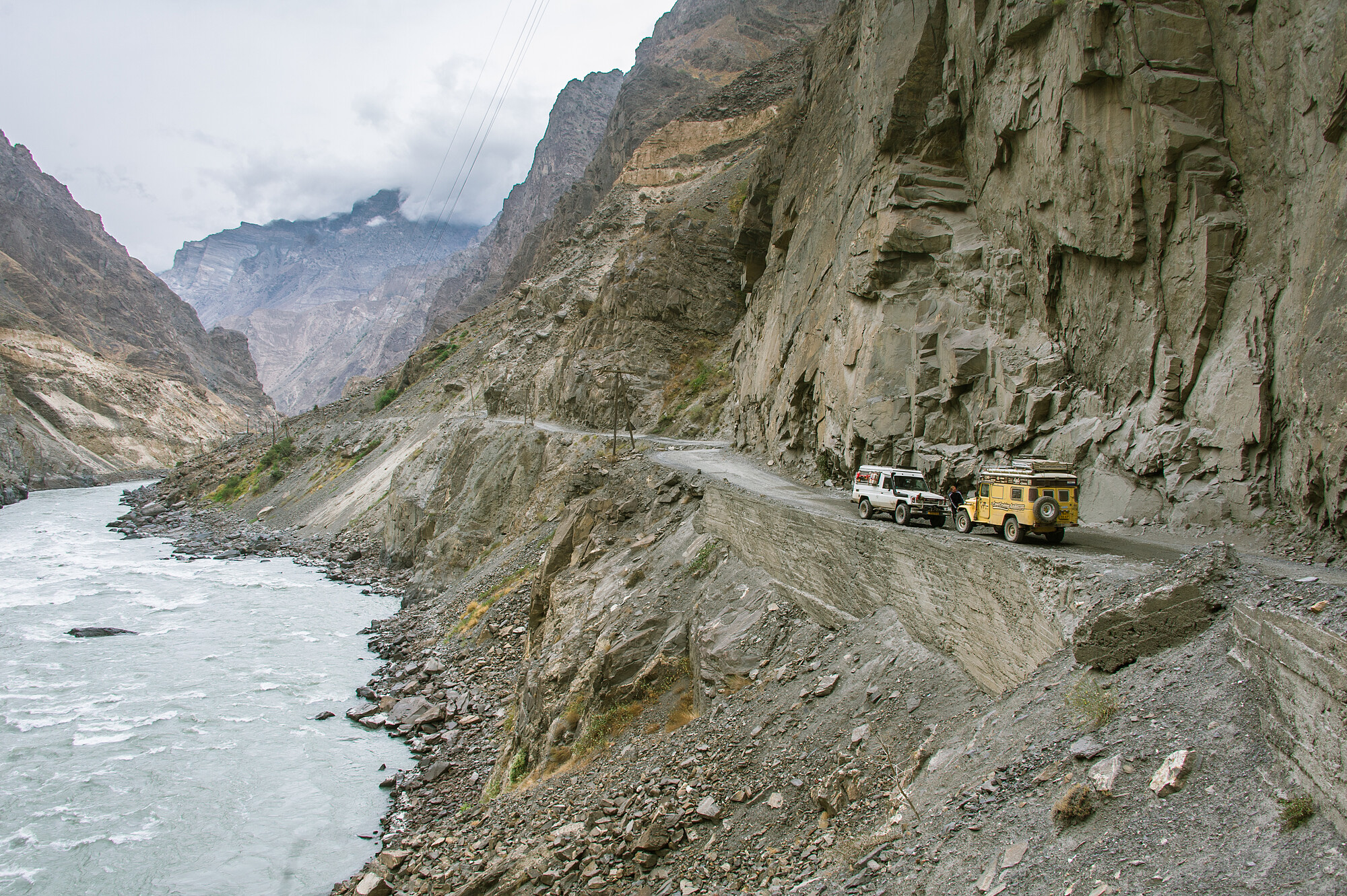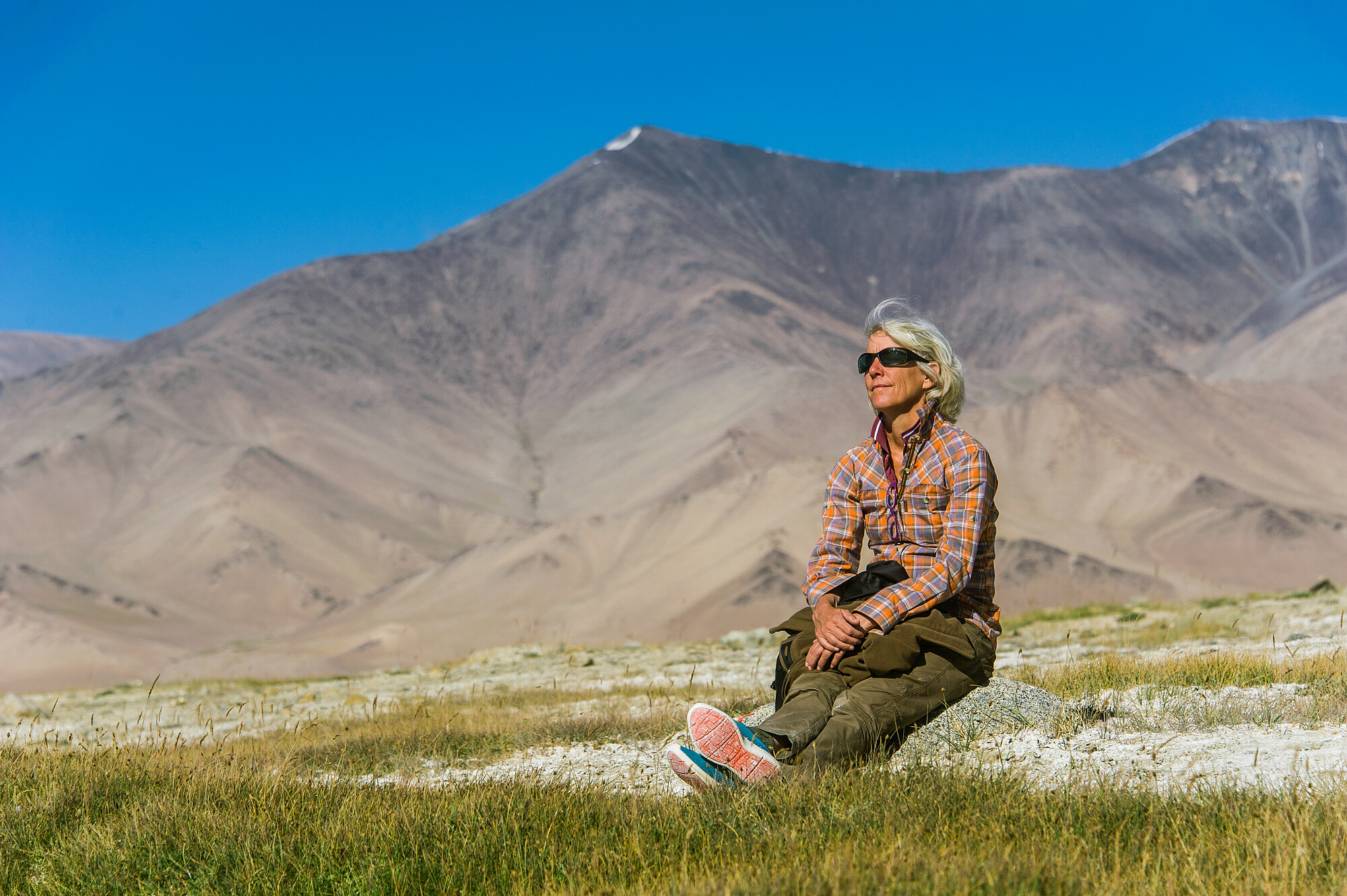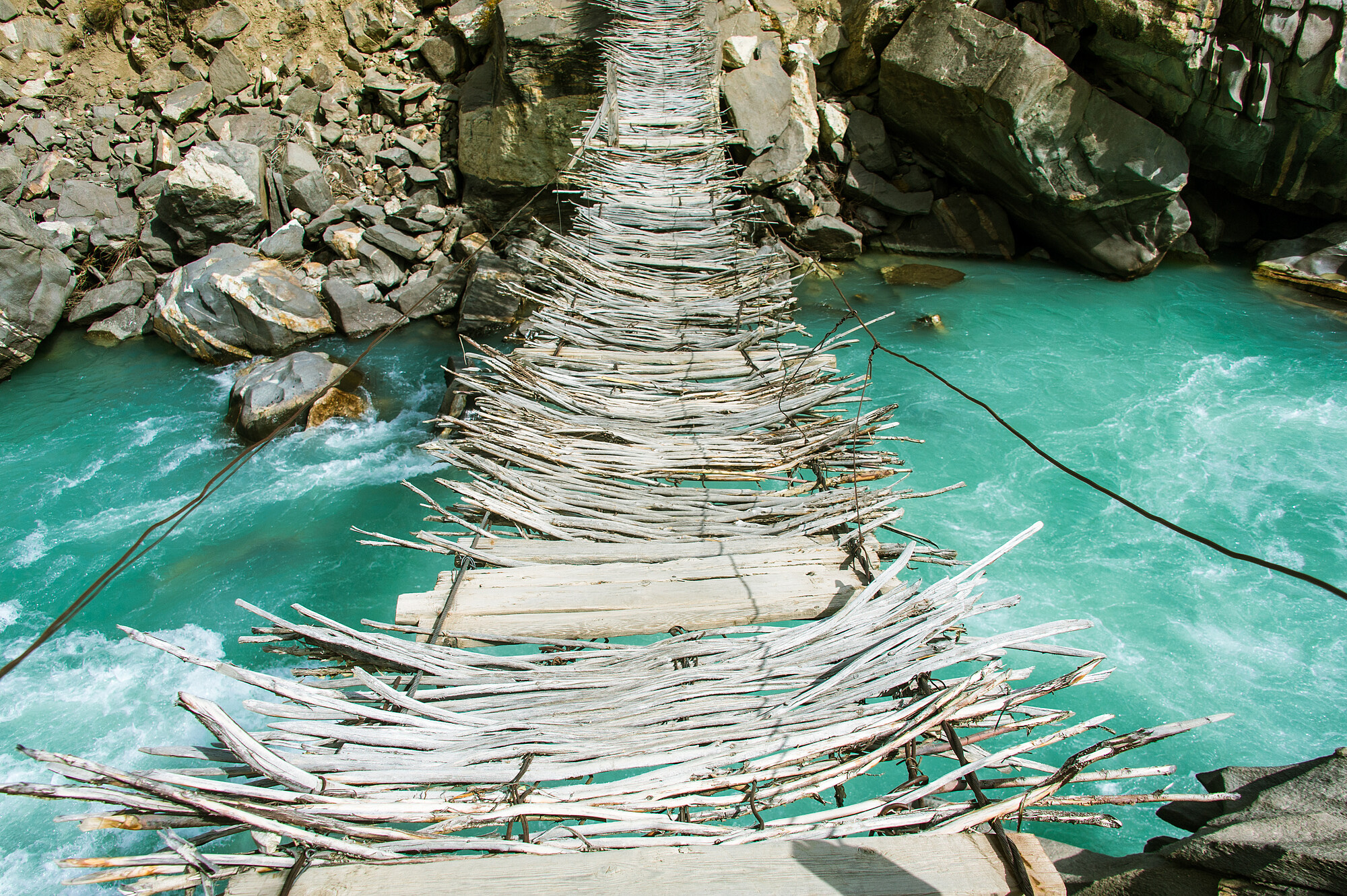Crossing high-altitude deserts with snow-capped mountains rising on the horizon, meandering through gorges along vertical rock walls. And that for 766 miles! How can that not be attractive to any overland traveler? The largely unpaved road alternates with smooth asphalt and paved stretches that have turned into washboards and potholes, so you never know what to expect around the corner. The Pamir Highway challenges you to stay alert every second.
You inflate your tires because it seems that ‘from now on the road is good’ and deflate them after half a mile on rock-protruding road surface that is killing your suspension and your back. Your mood swings from wondering what the heck you’re doing in this desolate part of the world seeing nobody and nothing for ages to marveling why you have never heard of this gorgeous route before.
Welcome to the Pamir Highway, locally dubbed the Roof of the World!
The second highest highway in the world, the 766-mile long M41– better known as the Pamir Highway – connects Dushanbe in Tajikistan to Osh in Kyrgyzstan. On your route you’re bound to meet fellow overlanders by car or motorcycle, cyclists, and even adventurers who hike sections of it. While you may never have heard of the Pamir Highway, others have and many who do, start planning right away. With reason.
Here’s what driving the Pamir Highway offers you.


1. A digital detox in majestic surroundings
How many of us are wondering if it’s still possible, life without cell phones? Does it still exist, a place where you’re literally off the grid? How many of us are craving a digital detox? If you are one of them, look no further. The Pamir Highway is the place to go.
Yes, in Tajikistan people have cell phones and yes, you can buy a SIM card but on the Pamir Highway it is largely useless. While you can connect with the rest of the world in some of the villages and towns (even then speeds merely suffice for an email check), driving the Pamir Highway gives you the perfect excuse that for a couple of days – weeks, if you like – you can’t be reached.



2. A look into Afghanistan
Afghanistan was put on the world map in 2001 for all the wrong reasons and many travelers wistfully think of the 1970s when Afghanistan was part of the popular ‘hippy trail’ from Europe to India. While its northernmost section, the Wakhan Corridor, can be visited by foreigners these days, few do.
Driving the Pamir Highway allows you to peek into Afghanistan. Part of the road follows the Panj River that is the actual border between Tajikistan and Afghanistan. Sometimes it’s so narrow you could actually jump rocks to cross (not advised). What you see is a mountainous landscape like the gorgeous one you’re driving in. Homes built with the same material, people working the land like their neighbors do.
Driving here is a good reminder of how much more we are alike than different and that borders are among the most ridiculous inventions of mankind.



3. A Glance into Central Asia’s Rich History
Central Asia was a fundamental, literally ‘central’, part of the Silk Road that connected China with Europe and beyond, the Pamir Highway being one of the routes (the ancient Pamir route ran farther than the current M41, from Dushanbe into Uzbekistan and Afghanistan). The region was home to the largest, most vibrant cities of the time, with important centers of learning and architectural masterpieces. The Pamir Highway passes the ruins of the fort at Rushan, the partly restored Khulbuk Fortress (9th century), as well as the recently discovered ancient settlement of Karon (presumably 4,500 years old).
The border through the above-mentioned Wakhan Corridor was the direct result of the Great Game between the British and the Russians in the 19th century who were both vying for control of the region. The Pamir Highway was, in fact, built by the Russians to secure this part of the world for the Russian empire (and later Soviet Union).
History breathes in every nook and cranny here. To read up on the history of this fascinating region, treat yourself to the wonderfully written The Silk Road, a New History of the World by Peter Frankopan as well as the fascinating read of The Great Game, by Peter Hopkirk.


4. A Way to Connect with Local People
The Pamiri are among the most hospitable and friendly people on earth. It’s the single most heard remark you’ll get from fellow travelers, “These people are so incredibly kind and easy to meet!”
In our 16 years on the road we’ve grown used to waving to people in return to their greetings as we pass by – in villages we always drive with the windows rolled down – but no place has come anywhere close to this. Kids are enthusiastically yelling “Hello!”, men and women beckon to come and join them for tea. It’s easy here to take up on these invitations and if you like a trip that allows you to interact with local people, the Pamir Region is the place to go.
Expect green tea., It’s what is typically drunk in the region and is always served with nan bread. Fresh from the tandori oven it’s at its very best, still warm and soft. If you are a meat eater, you’ve come to the right place – practically all dishes include meat. (For vegetarians this is not a particularly inviting cuisine – although the delicious nan makes up for a lot of it – so we cooked most of our own meals).




5. An Epic Road Trip
It’s not without reason that the Pamir Highway is part of the famous Mongol Rally. Driving (or cycling) the Pamir Highway is hard work, and therefore rewarding. Whether you have to cycle up the 4655m-high Ak Baital Pass or battle the horrendous washboard, getting to the top and looking out over this mindblowing landscape is an image that will stay with you forever.
You’ll struggle with strong head winds on high-altitude deserts, be bored on seemingly never-ending monotonous stretches, bewildered by the force of Mother Nature as you watch the Panj River thundering through narrow defiles, and be in awe when staring up at those vertical rock walls. You’ll be bloody hot at noon when the sun is beating down on you and be happy you brought that extra sweater when the sun sets and temperatures plummet.
Traveling the Pamir Highway is not for the faint-hearted. It challenges you in every possible way and leaves you with a sense of wonder. And then I haven’t even talked about the dozens of side-routes and loopes you can do, deeper into the Pamir Mountains.
The Pamir Highway is, simply put, one of the most epic road trips you’ll ever take.




